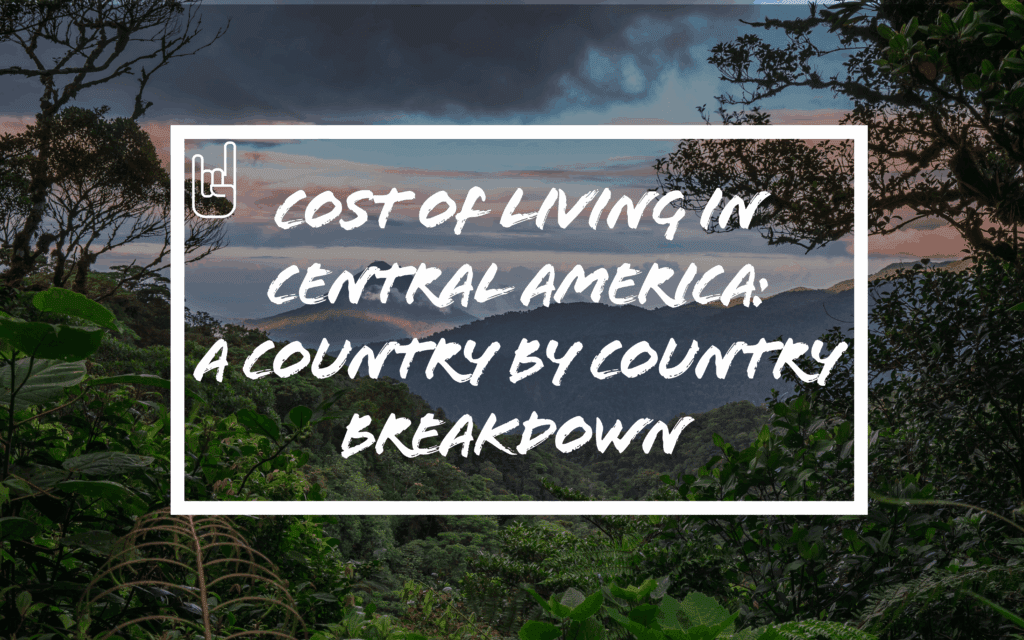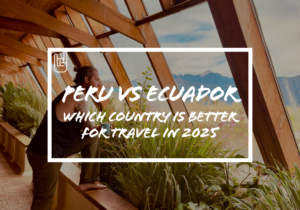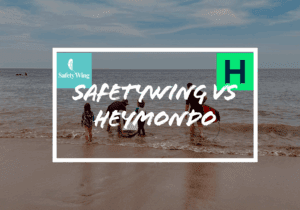Cost of Living in Central America
Thinking about heading to Central America but unsure what it’ll actually cost? Whether you’re a backpacking parent, remote worker, or slow-travelling family, understanding the real cost of living is key. From monthly rent and groceries to SIM cards and street food, we break down what you can expect to spend across popular Central American countries, based on real-time research and firsthand digital nomad data.
Cost of Living in Central America (Quick Guide)
💳 Money: Avoid ATM fees with Wise or Revolut.
🏠 Stay: Booking.com & Airbnb often have long-stay discounts. TrustedHousesitters if you’re flexible.
🚐 Transport: Buses are cheap, rentals faster, compare with DiscoverCars.
📱 Data: Buy an Airalo eSIM before you fly.
🛡️ Insurance Lightweight family insurance coverage
🍎 Food: $3–$5 street food, $8–$15 restaurants, markets are cheapest.
Why We Built This Guide
Whether you’re chasing remote work freedom, planning a family gap year, or plotting your next budget-friendly base abroad, Central America keeps popping up and for good reason.
With countries that span Caribbean coastlines, cloud forests, and colonial cities (all within a few hours’ flight of the U.S.), this region is a natural draw for long-term travellers and digital nomads. But one of the most common questions we hear is also the most practical:
How much does it really cost to live in Central America in 2025?
This guide was built to answer that, using real numbers, not travel brochure fluff.
We’ve pulled data from Numbeo and Nomads.com, two of the largest user-powered cost-of-living databases, and layered in a family travel lens based on our own preparation for long-term travel. That means this guide isn’t just about coliving hubs and coworking spaces, it’s about what it costs to buy groceries, rent a 2-bedroom apartment, hop on a bus, and take your kids out for lunch without blowing your entire monthly budget.
Some countries (like Nicaragua or El Salvador) remain surprisingly affordable. Others (hello, Costa Rica) might require a more strategic approach or a higher budget cap. Where you go and how you travel make all the difference.
We wrote this so you can plan with confidence, not just dream in the abstract.
Let’s dive in.
Table of Contents
How This Data Was Collected
To give you a realistic, region-wide snapshot of the cost of living in Central America in 2025, we sourced data from two of the most reputable platforms available: Numbeo, the world’s largest user-generated database of city-level cost-of-living data, and Nomads.com, which provides travel and expense benchmarks specifically for remote workers and long-term travelers. Both sources pull in active user submissions and are updated frequently, making them more reliable than static government figures or outdated guidebooks.
We’ve cross-referenced average prices for:
Monthly rent (1–3 bedroom apartments in city centers and residential neighbourhoods)
Groceries and food (local produce, supermarkets, and dining out)
Transportation (bus passes, fuel, taxis)
Utilities and internet (Wi-Fi, electricity, water)
Daily life costs (childcare, gym, coffee, entertainment)
To make this guide even more practical, we’ve converted all currencies to USD for comparison, since that’s what many travellers budget in, and included two cost snapshots per country:
One for a solo traveller (think: digital nomad, remote worker, or backpacker)
One for a family of four (like ours, me, Tania, Atticus and Aurielia)
You’ll also find callouts and contextual notes where things can change depending on the city (e.g. San José vs. Tamarindo in Costa Rica), the type of accommodation you choose, and how deep into the tourist trail you go. A family living in León, Nicaragua, will have a vastly different monthly spend than one in Panama City’s financial district.
We’ve also added family-specific context: how easy it is to get groceries, what eating out costs when kids are involved, how reliable the Wi-Fi is for worldschooling or remote work, and whether a place is stroller-friendly or better suited for teens and tweens.
Lastly, we’ve grounded this in our real travel planning process. This guide reflects the exact framework we’re using to plan our own route through Central America, with cost of living being one of the biggest pieces of the puzzle.
Cost of Living by Country: Central America Comparison (2025)
Here’s your quick-glance snapshot of what it actually costs to live across Central America in 2025. From budget backpackers to family gap years, these ballpark estimates reflect monthly living costs based on current data from Numbeo, Nomads.com, and recent travel community insights.
🇬🇹 Guatemala
Diverse, affordable, and rich in culture, best value in smaller cities like Xela or Antigua.
1-bed rent in Antigua: ~$330/month
Local lunch: $3–4
Monthly budget (solo): ~$950
Monthly budget (family): ~$1,600
🇭🇳 Honduras
Ultra low cost but limited infrastructure. Good for beach bums or minimalists.
Rent (city center, La Ceiba): ~$270/month
Grocery budget (solo): ~$200
Monthly budget (solo): ~$850
Monthly budget (family): ~$1,400
🇸🇻 El Salvador
Bitcoin experiment aside, still affordable with improving safety in major cities.
Rent in San Salvador: ~$400/month
Street food meal: ~$2.50
Monthly budget (solo): ~$950
Monthly budget (family): ~$1,600
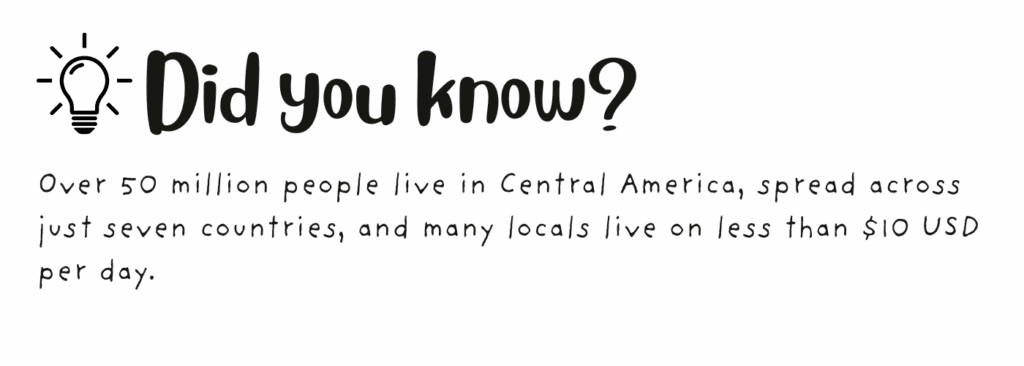
🇳🇮 Nicaragua
Calm, cheap, and surf-lifestyle friendly, especially around San Juan del Sur and León.
2-bed apartment (outside Granada): ~$380/month
Menu del día: ~$3
Monthly budget (solo): ~$900
Monthly budget (family): ~$1,500
🇨🇷 Costa Rica
One of the priciest in the region, but solid infrastructure and family-friendly.
2-bed in San José suburb: ~$750/month
Groceries (family): ~$500
Monthly budget (solo): ~$1,500
Monthly budget (family): ~$2,500
🇵🇦 Panama
Modern, developed, and priced to match — Panama City = big city budget.
Rent (city center, Panama City): ~$800
Lunch at local café: ~$6
Monthly budget (solo): ~$1,400
Monthly budget (family): ~$2,300
🇧🇿 Belize
Laid-back Caribbean vibes, English-speaking, but island life comes with island prices.
Rent (1-bed in San Ignacio): ~$500
Grocery costs (import-heavy): ~$350 (solo)
Monthly budget (solo): ~$1,200
Monthly budget (family): ~$2,000
What’s next?
We’ll now break down each country individually, including family-friendly notes, sample prices, and where to stretch your budget best.
🇬🇹 Guatemala: Color, Culture, and Low Costs
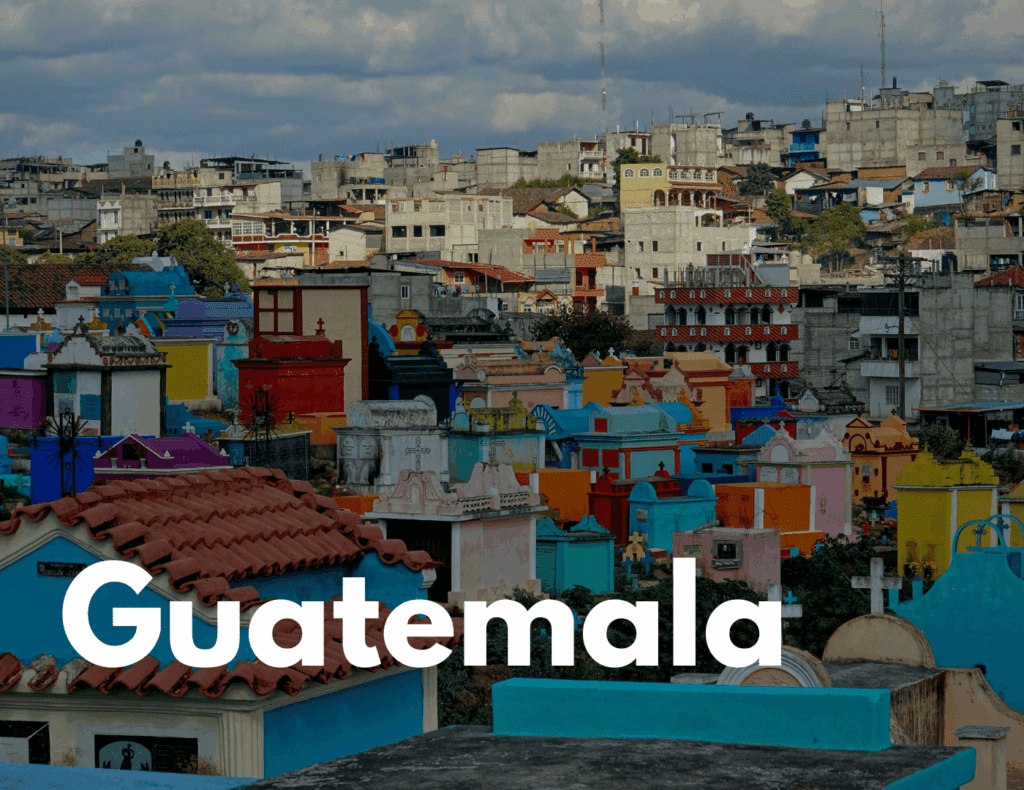
Cost of Living in Guatemala (2025)
Guatemala continues to be one of the best-value destinations in Central America for digital nomads and slow-travelling families alike. With a dynamic mix of colonial cities, lakeside towns, and highland villages, it offers both cultural depth and affordability. While costs in tourist hubs like Antigua are creeping up, smaller cities like Quetzaltenango (Xela) still deliver major savings.
Estimated Monthly Cost (2025)
Solo traveller: ~$950 USD
Family of four: ~$1,600 USD
Housing
1-bed in Antigua city center: ~$330
3-bed family home outside city: ~$600
Antigua offers walkability, safety, and good amenities, but prices are 20–30% higher than other cities. Xela, Lake Atitlán villages, and Cobán offer lower rents and calmer, local-focused vibes. Monthly Airbnb discounts can also make short-term living cost-effective.
Food & Groceries
Local lunch (menu del día): ~$3–4
Monthly grocery shop (family): ~$320
Guatemalan markets are packed with fresh produce, avocados, tropical fruit, and vegetables are cheap and abundant. Imported goods drive prices up in supermarkets, so buy local when possible. Eating out is very affordable, especially at comedores (family-style eateries).
Transport
Local bus ride: ~$0.30
Monthly tuk-tuk/taxi costs: ~$40–60
Chicken buses are colourful, chaotic, and cheap, but not always family-friendly. Many travellers and families opt for tuk-tuks or private shuttles between towns. Intercity travel is affordable via minivans or shared vans, though roads can be rough.
Family Travel Insight
Guatemala is surprisingly kid-friendly. Antigua has excellent Spanish schools and calm, walkable streets. Lake Atitlán’s villages (especially San Marcos or San Pedro) have strong worldschooling and remote work communities. Just be aware of altitude changes in places like Xela and keep water filtration handy. Medical care is adequate in cities, but basic in rural areas.
Final Thought:
Guatemala is ideal for families who want to balance culture, community, and cost-efficiency. It’s not polished, but it’s rich in rhythm, friendly faces, and the kind of “real world” immersion that makes slow travel worth it.
🇭🇳 Honduras: Low Cost, Laid-Back, and Less Traveled
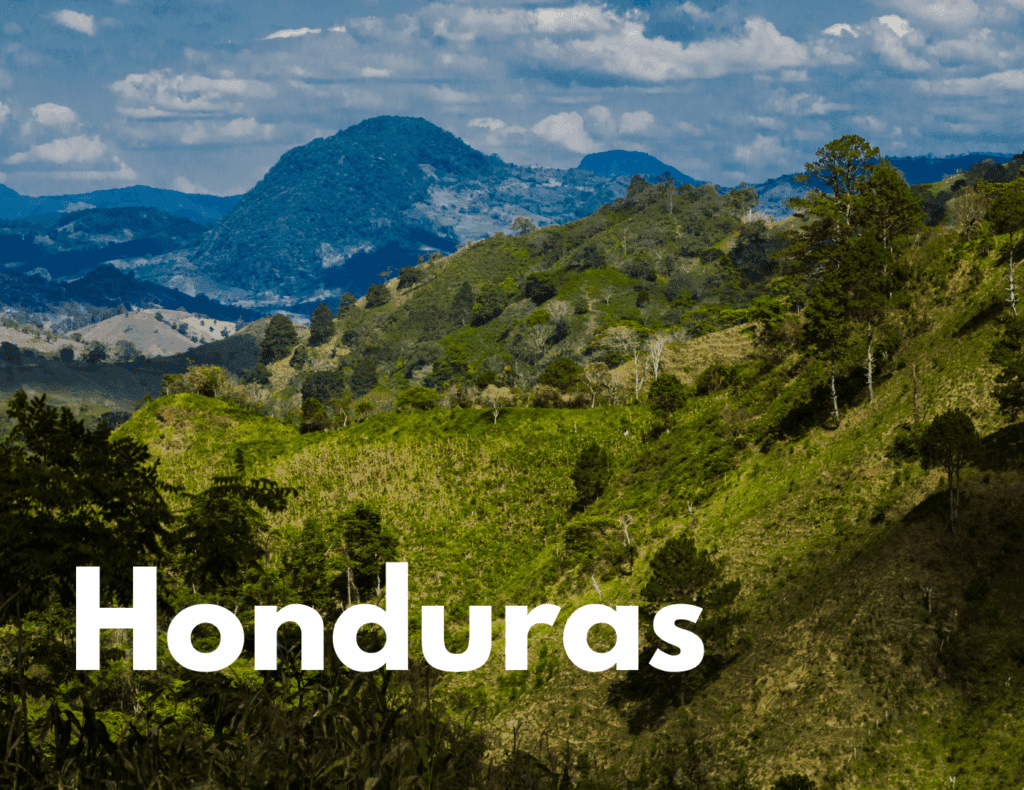
Cost of Living in Honduras (2025)
Often overshadowed by its neighbours, Honduras remains one of the cheapest countries in Central America, especially for travellers willing to go beyond the headlines. From colonial towns like Gracias and Copán Ruinas to the Caribbean vibes of the Bay Islands, it’s possible to live well here on a modest budget. That said, safety concerns in certain regions mean travellers need to be extra savvy about where they base themselves.
Estimated Monthly Cost (2025)
Solo traveller: ~$850 USD
Family of four: ~$1,500 USD
Housing
1-bed apartment in Copán Ruinas: ~$250
3-bed home near La Ceiba: ~$500
Housing is remarkably affordable, even in tourist areas. The Bay Islands (like Roatán or Utila) are slightly more expensive, but still cheaper than Caribbean alternatives. For longer stays, you’ll find furnished rentals at local rates if you go off-platform.
Food & Groceries
Street meal (baleadas, tacos): ~$2
Monthly groceries (family): ~$300–350
Local food is simple and cheap. Expect beans, rice, tortillas, and fresh-caught seafood. Markets in towns like La Ceiba or Comayagua are full of budget-friendly produce. Supermarkets carry fewer imported goods than elsewhere, so Western brands may be pricey or unavailable.
Transport
Public bus ride: ~$0.40
Intercity shuttle: ~$10–15
Public buses and taxis are widely used, though not always organized. The chicken bus system exists but varies in safety and comfort. Many expats and long-term travelers opt for private transfers or rental scooters on the islands.
Family Travel Insight
For families, Honduras is a mixed bag. The Bay Islands offer a laid-back, English-speaking Caribbean feel with good snorkelling, calm beaches, and a growing remote work crowd. Inland towns like Copán Ruinas are walkable and culturally rich, but medical infrastructure can be basic. Stick to areas known for tourism or expat presence, and ask locals about neighbourhood safety.
Final Thought:
Honduras might not be everyone’s first pick, but for those willing to plan smart and stick to well-regarded areas, it delivers serious savings and natural beauty, from coral reefs to misty mountain towns, without the crowds or high costs.
🇸🇻 El Salvador: Surf, Sunsets, and Surprising Affordability
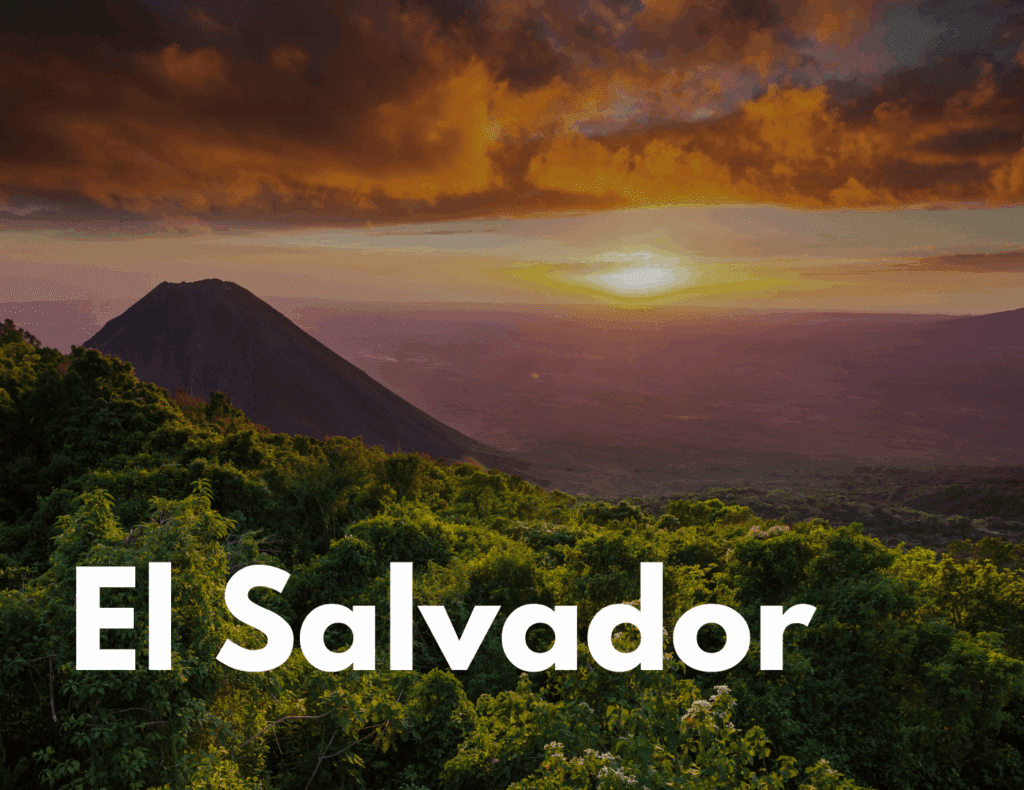
Cost of Living in El Salvador (2025)
El Salvador has quietly become a digital nomad underdog, thanks to stunning surf beaches, welcoming locals, and a cost of living that rivals the region’s cheapest. While the country has faced political and safety challenges in the past, recent years have seen dramatic shifts, especially in tourist-friendly zones like El Tunco, San Salvador, and the Ruta de las Flores.
For long-term travellers or families looking for a budget-friendly home base with Pacific vibes and steady Wi-Fi, El Salvador delivers more than you’d expect.
Estimated Monthly Cost (2025)
Solo traveller: ~$950 USD
Family of four: ~$1,600 USD
Housing
1-bed apartment in San Salvador: ~$400/month
3-bed house near the beach (El Tunco or El Zonte): ~$700/month
El Salvador’s housing market is small but affordable. Beach rentals are more in demand now, especially among remote workers, but you can still find monthly deals by going directly through local agents. San Salvador offers the best infrastructure but also the highest variation in cost based on neighbourhood.
Food & Groceries
Pupusas (national dish): ~$0.50–1 each
Groceries (family): ~$350/month
Local cuisine is hearty and cheap, and pupuserías (pupusa stands) are everywhere. Farmers’ markets offer excellent value, while imported foods and Western-style supermarkets push up costs. Eating out is budget-friendly and kid-friendly across most towns.
Transport
Local bus fare: ~$0.35
Uber/taxi short ride: ~$3–5
Transport is affordable and improving, especially in San Salvador and coastal hubs. Rideshares like Uber are available in bigger cities and are often the safest and most convenient option for families. Most beach towns are walkable, and surf-shuttle networks are growing for regional travel.
Family Travel Insight
El Salvador is more family-friendly than its reputation lets on. Coastal towns like El Zonte are peaceful and community-oriented, with growing expat scenes and relaxed vibes. Safety is still area-dependent, so research neighbourhoods carefully. Public parks, beaches, and markets offer a great daily rhythm for travelling families.
Final Thought:
El Salvador is one of Central America’s best-kept secrets for budget-conscious travellers and remote-working families. If you’re after warm waves, walkable beach towns, and a country that’s reinventing itself fast, this is one to watch.
🇳🇮 Nicaragua: Low Costs, Big Nature, and a Slow Travel Vibe
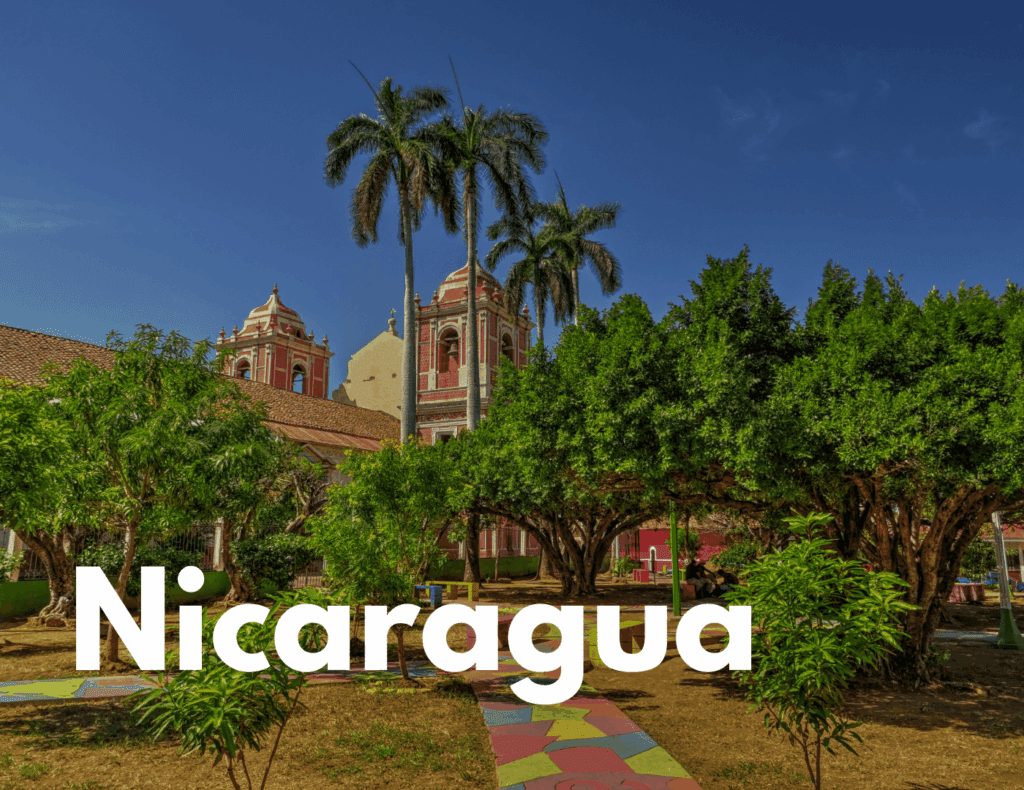
Cost of Living in Nicaragua (2025)
Nicaragua remains one of the most affordable countries in Central America and arguably one of the most underrated. From colonial cities like Granada to surf-friendly towns like San Juan del Sur, it’s a destination that offers both charm and serious value.
Despite political unrest in the past decade, daily life for expats, nomads, and long-term travellers is generally safe and laid-back, especially in well-trodden hubs. For families, Nicaragua’s low costs and gentle pace make it a tempting pick, just be ready for rustic infrastructure in some areas.
Estimated Monthly Cost (2025)
Solo traveller: ~$850 USD
Family of four: ~$1,500 USD
Housing
1-bed apartment in Granada: ~$300/month
3-bed house near San Juan del Sur: ~$600/month
Rent is one of Nicaragua’s biggest perks. You can find charming colonial-style homes with courtyards or ocean-view properties for a fraction of what you’d pay elsewhere. Granada and León are top picks for urban comfort on a budget, while the Pacific coast draws surf-loving nomads and digital workers.
Food & Groceries
Gallo pinto with eggs: ~$1.50
Groceries (family): ~$300/month
Local food is simple, hearty, and affordable. Expect rice, beans, plantains, and fresh fruit at rock-bottom prices. Western groceries are available in cities but come at a premium. Eating out at comedores (local diners) can often be cheaper than cooking, and kids are always welcome.
Transport
Chicken bus fare: ~$0.25–0.50
Taxi (city): ~$3–5
Public transportation is dirt cheap but basic. Chicken buses are iconic but not always family-friendly. For day-to-day transport, taxis and tuk-tuks are more manageable, and car rentals are affordable by regional standards if you’re planning road trips.
Family Travel Insight
Nicaragua’s slower pace can be a real asset for travelling families. Cities like Granada are walkable, calm, and full of parks and plazas. Coastal towns have strong communities of remote workers and families, making it easy to find connections. However, access to top-tier medical care and international schools is limited, better for short- to mid-term stays unless you’re open to homeschooling or worldschooling.
Final Thought:
Nicaragua is a low-cost gem with a lot of heart. It might not be the most polished destination in the region, but for families or solo travellers chasing affordability, nature, and slower rhythms, it’s one of the best value-for-money options in Central America.
Family Travel Kickstart Kit
🇨🇷 Costa Rica: Nature, Safety, and a Price Tag to Match
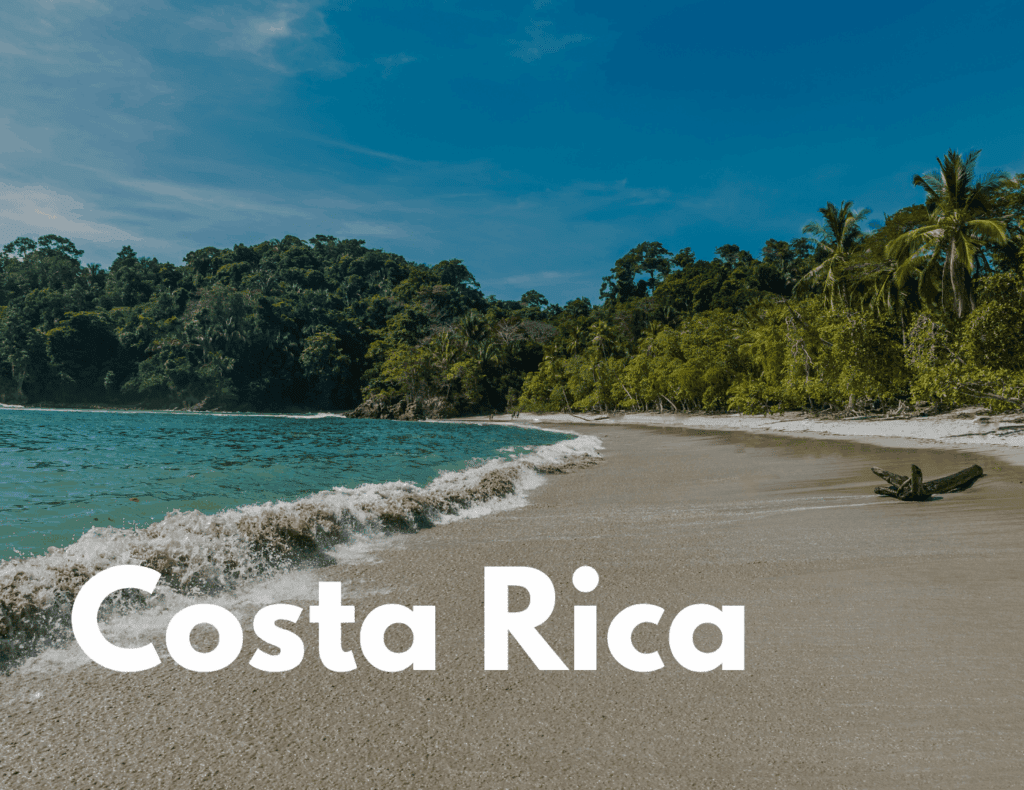
Cost of Living in Costa Rica (2025)
Costa Rica has long been the golden child of Central America, known for its incredible biodiversity, strong expat networks, and family-friendly vibe. But that reputation comes with a price. In 2025, Costa Rica remains one of the most expensive countries in the region, especially in popular beach towns and expat-heavy areas.
Still, for those who prioritise safety, infrastructure, and access to outdoor adventure, the value is there. Families and digital nomads will find stable internet, reliable healthcare, and tons of educational experiences, from wildlife sanctuaries to volcano hikes.
Estimated Monthly Cost (2025)
Solo traveller: ~$1,600 USD
Family of four: ~$2,800 USD
Housing
1-bed in San José (city center): ~$650/month
3-bed near the coast (e.g., Tamarindo or Nosara): ~$1,200–$1,600/month
Housing costs vary wildly depending on location. You’ll pay a premium for beach proximity, especially in places like Santa Teresa, Nosara, or Uvita. More affordable options exist in the Central Valley (e.g., Grecia, Atenas) — and offer cooler climates and easier access to services.
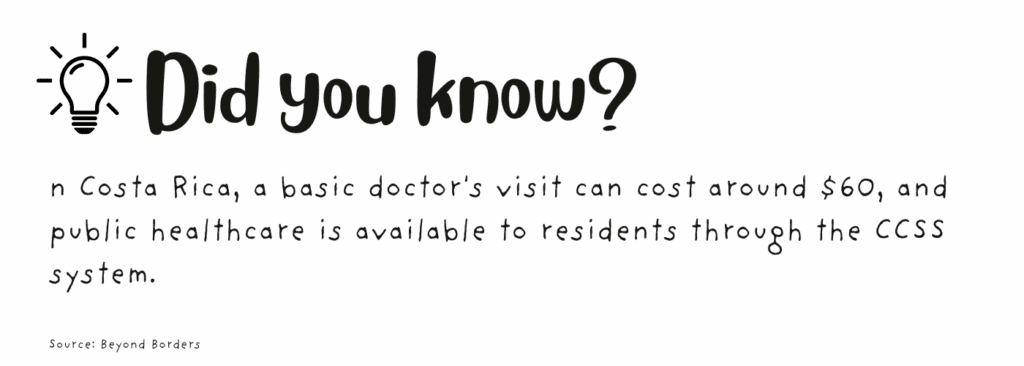
Food & Groceries
Casado meal (local plate): ~$6–8
Groceries (family): ~$500–600/month
Groceries are noticeably more expensive than elsewhere in Central America, especially imported goods. Local markets offer better value (think: bananas for $0.10, plantains for days). Eating out can range from cheap sodas (local diners) to Western-style cafés with U.S.-level pricing.
Transport
Bus fare (local): ~$1
Rental car (per day): ~$30–50
Public transportation in cities and between towns is solid and affordable, though limited on the coasts. Renting a car gives you freedom, especially for families, but add in insurance, gas, and 4WD if you’re heading into rugged areas.
Family Travel Insight
Costa Rica is one of the most kid-friendly countries in Latin America. People love children, and nearly every town has a plaza, park, or waterfall hike within reach. Healthcare is excellent (private clinics are widely available), and the country’s focus on sustainability means endless eco-learning opportunities for worldschooling families. That said, international schools are expensive, and long-term living here requires a higher baseline budget.
Final Thought:
Costa Rica delivers the full package: stunning landscapes, ease of living, and a gentle intro to Latin America. It’s not cheap, but for those with the budget, it’s a strong contender for both short and long-term stays.
🇵🇦 Panama: Stable, Streamlined, and Surprisingly Underrated
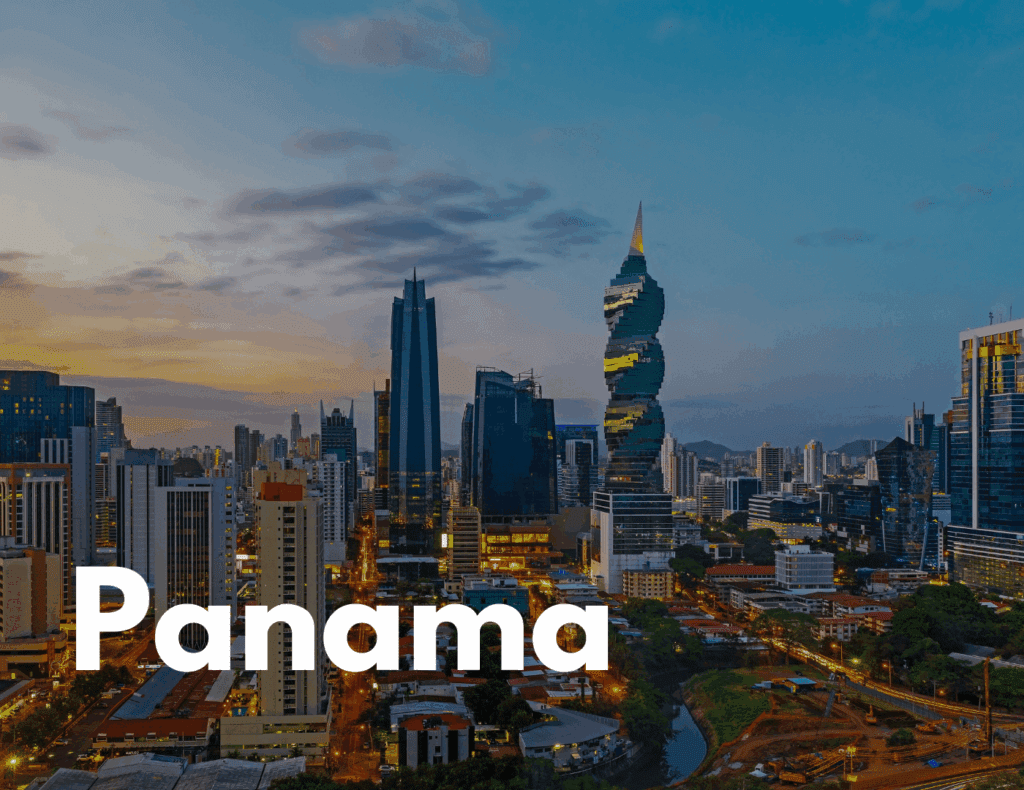
Cost of Living in Panama (2025)
Panama is the Central American curveball: often overlooked in favor of flashier neighbors, but quietly one of the most stable and infrastructure-rich countries in the region. With the U.S. dollar as its currency and a thriving expat scene, Panama feels more “plug and play” than many Latin destinations.
In 2025, Panama remains a mid-to-high cost option. It’s more affordable than Costa Rica, especially outside Panama City, but don’t expect backpacker pricing. What you get in return is convenience, safety, and speed, fast Wi-Fi, well-paved roads, efficient banking, and modern amenities. For families or remote workers wanting a gentle landing, Panama’s value lies in ease, not rock-bottom prices.
Estimated Monthly Cost (2025)
Solo traveller: ~$1,400 USD
Family of four: ~$2,400 USD
Housing
1-bed apartment in Panama City (city centre): ~$700–$850/month
3-bed apartment in David or Boquete: ~$1,100–$1,400/month
Panama City is sleek and high-rise-heavy, with costs to match. Look to mountain towns like Boquete for cooler weather and more affordable rentals, popular with retirees, slow travellers, and families seeking quiet but connected communities.
Food & Groceries
Local lunch (“corrientazo” style): ~$5–7
Groceries (family): ~$450–$550/month
Imported groceries bump up the bill quickly. Stick to local produce, fish, and markets to stretch your budget. Restaurant prices range widely depending on area, you’ll find $6 ceviche plates near the beach and $25+ pasta dishes in city malls.
Transport
Metro fare (Panama City): $0.35
Intercity bus: ~$8–15
Panama City’s metro is the only subway system in Central America, clean, cheap, and efficient. Buses are comfortable and cover most of the country. Rideshares are common in urban areas, while rural regions may require a rental or private shuttle.
Family Travel Insight
Panama works well for families who want comfort and connectivity. Schools (both local and international) are abundant, and Panama City has parks, museums, and even rainforest trails within city limits. For a quieter life, Boquete is a growing expat hub with English-speaking doctors, community events, and safe streets. The only trade-off? It doesn’t always feel like adventure travel, Panama is the chill, organised cousin in the region.
Final Thought:
Panama may not scream “wild adventure,” but for families and digital nomads who prioritise ease, safety, and solid infrastructure, it delivers — at a fair (but not dirt-cheap) price.
Belize: Caribbean Vibes, English-Speaking Ease, and Island Price Tags
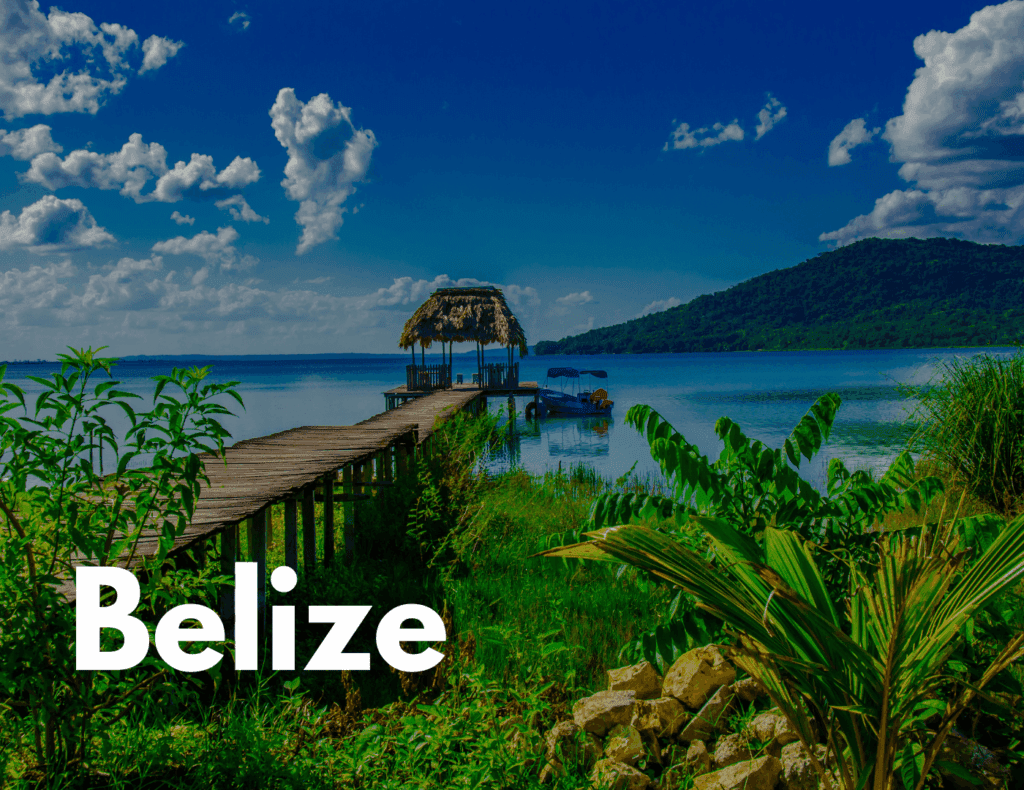
Cost of Living in Belize (2025)
Belize stands out in Central America. It’s the only country in the region with English as the official language, has a laid-back Caribbean feel, and offers some of the most stunning coastlines and dive spots this side of the Pacific. But those perks come at a cost…quite literally.
In 2025, Belize remains one of the pricier destinations in Central America, especially on the islands (Ambergris Caye, Caye Caulker) and coastal hotspots like Placencia. Inland towns like San Ignacio are more affordable, but infrastructure can be inconsistent. What Belize offers is ease of communication, natural beauty, and a more “off-the-map” vibe compared to Costa Rica or Panama.
Estimated Monthly Cost (2025)
Solo traveller: ~$1,500 USD
Family of four: ~$2,600–$2,800 USD
Housing
1-bed apartment (Caye Caulker or San Pedro): ~$750–1,000/month
3-bed house (San Ignacio or Corozal): ~$1,200–$1,800/month
Expect high rents in popular beach areas. Inland rentals are generally cheaper, and long-term leases can significantly reduce costs. Many digital nomads opt for small local guesthouses that offer monthly deals.
Food & Groceries
Local meal: ~$6–9
Groceries (family): ~$500–600/month
Belize imports a lot, which hikes up grocery bills, especially dairy, packaged goods, and snacks. Local fruit, seafood, and staples like rice and beans are affordable. Dining out is common, but it adds up quickly on the islands.
Transport
Ferry from Belize City to Caye Caulker: ~$20 round trip
Local bus (Belmopan to San Ignacio): ~$3
Ferries and water taxis are common in coastal and island areas. Inland transport is basic but functional; chicken buses and shared vans cover most routes. For families, a rental car might be the most efficient option, especially for rural or jungle-based stays.
Family Travel Insight
Belize is naturally engaging for kids, think snorkelling with rays, jungle hikes, and Mayan ruins, but it’s not the most budget-friendly family base. Childcare, schooling, and medical care can be limited outside the main towns. That said, families wanting immersive, nature-forward experiences and an English-speaking setting will find Belize a compelling (if premium) option.
Final Thought:
Belize isn’t cheap, but it offers simplicity: easy language, unforgettable nature, and a chill, Caribbean rhythm. For families and travellers wanting an adventure that still speaks English and doesn’t skimp on scenery, Belize delivers just budget accordingly.
Also read: Airalo vs Nomad
Where’s the Best Value in Central America?
Central America is compact, but the range in cost, safety, and infrastructure between countries is wide. For digital nomads, families, and long-term travellers, “best value” doesn’t always mean the cheapest it means where your money stretches and your lifestyle thrives.
Here’s how it stacks up in 2025:
Cheapest Overall (Budget Traveler Wins)
Nicaragua
Still the lowest cost of living in the region. Rent, food, and transport remain well below the Central American average, even in popular spots like Granada or León. Infrastructure lags behind, but if you’re flexible, Nicaragua is unbeatable for daily savings.
Honduras (mainland)
Incredibly low rent and food costs, especially in smaller towns. But safety concerns and limited digital nomad infrastructure mean this is best for short stays or experienced travelers with trusted local contacts.
Source: Belize Cost of Living Data – Numbeo (2025)
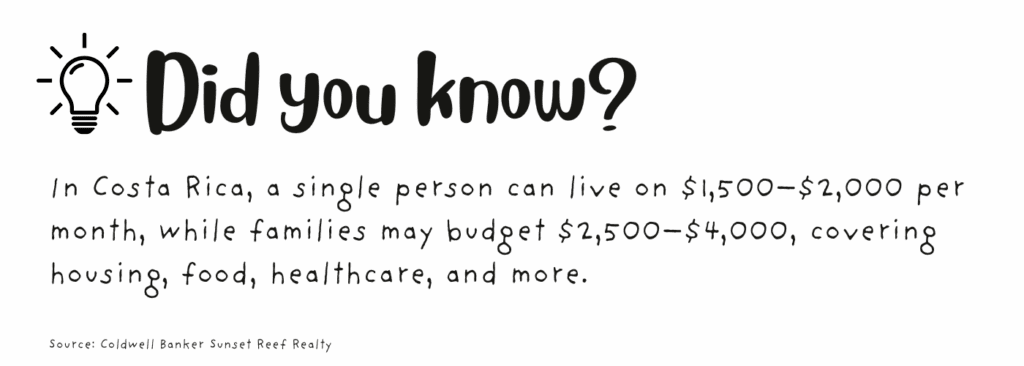
Most Family-Friendly Countries
Costa Rica
Top marks for safety, clean cities, playgrounds, and nature-based activities. Medical care is solid, and the culture is extremely kid-friendly, just expect to pay for it.
Panama
A close second, especially for urban families. The capital has reliable services, international schools, and a strong digital backbone. Also ideal if you’re juggling remote work and homeschooling.
Best Mid-Tier Comfort for Digital Nomads
Guatemala (Antigua + Lake Atitlán)
Solid internet, beautiful scenery, and vibrant expat/nomad scenes. Rent is affordable, cafes are laptop-friendly, and Spanish immersion is easy. Just note: Wi-Fi in villages can be patchy.
El Salvador (Surf City + San Salvador)
A rising star. Fast internet, improving infrastructure, and crypto-forward initiatives have attracted digital workers. Still a bit raw, but livable on a moderate budget.
Our Pick for Long-Term Travel (2025 Plan)
As a family of four prepping for a full year in Latin America, we’re balancing three things:
Daily cost
Kid-friendliness
Decent Wi-Fi + livable pace
Based on our deep dive, our top picks in Central America are:
Guatemala (culture, cost, and calm vibes in Atitlán)
Panama (for a city base and easy onward flights)
Nicaragua (for slower travel and big savings)
We’re aiming for ~$2,000/month across countries, staying 4–6 weeks per spot, with flexibility baked in, which from the above stats I think this is doable.
Final Thoughts – Is Central America Worth It in 2025?
If you’re weighing up where to stretch your travel budget, build deeper family memories, or finally lean into that digital nomad life, Central America deserves a top spot on your radar in 2025.
From the surf towns of El Salvador to the lush highlands of Guatemala, this is a region that rewards slow travel and smart planning. It’s still one of the most accessible corners of the world for budget-conscious travellers, especially those coming from North America or Europe. Short flights, shared language roots (¡hola, español!), and thriving expat communities make transitions easier. But it’s the diversity, in both landscapes and lifestyles, that really sets it apart.

You can sip artisan coffee in a colonial plaza one morning and hike a jungle waterfall by afternoon. City hop with ease or tuck into a beach village and stay for weeks. For families, Central America offers the kind of hands-on learning you just can’t replicate in a classroom: cultural immersion, biodiversity, and the simple reminder that play looks the same in every language.
That said, it’s not always smooth. Infrastructure varies. Safety is nuanced. And the cost of living, while generally low, can climb fast if you’re not strategic with where you base yourself or how you spend. Tourist zones = inflated prices. Remote hubs = more planning. But with the right mindset (flexible, curious, ready to adapt), the payoff is huge.
We’re choosing Central America as one of our slow-travel regions for 2025 not just because of what it costs, but because of what it offers. A chance to connect. To simplify. To raise our kids not just in different places, but with different perspectives.
So yes, if you’re looking for real-world value, cultural depth, and the freedom to travel long-term without draining your savings, Central America is more than worth it.
Next step? Pick a country. Start a budget. And let the adventure begin.
Frequently Asked Questions
What is the average cost of living in Central America in 2025?
On average, living in Central America as a family in 2025 can cost between $1,000 and $2,000 USD per month, depending on the country, lifestyle, and accommodation choices. Guatemala and Nicaragua remain among the most affordable, while Costa Rica tends to be higher.
Which country in Central America is the cheapest to live in?
As of 2025, Nicaragua and Honduras are generally the cheapest, with basic living costs for a couple or family starting around $850–$1,200 USD per month.
Can you live comfortably in Central America on $1,500 a month?
Yes — in many Central American countries, a family can live comfortably on $1,500/month, especially if renting local housing, cooking at home, and avoiding tourist hotspots.
Is Central America safe for families to live or travel long-term?
Safety varies by region. Countries like Costa Rica and Panama are popular for families, while others may require more caution. Always research current safety updates and avoid areas under travel advisories.

